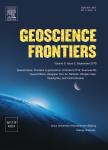A spectroscopic study on the effect of ultra-violet solar radiation in Antarctica on the human skin fbroblast cells
A spectroscopic study on the effect of ultra-violet solar radiation in Antarctica on the human skin fbroblast cells作者机构:Faculty of Life and Environmental ScienceShimane University Faculty of EducationShimane University Graduate School of Frontier SciencesThe University of Tokyo National Institute of Polar Research Graduate School of Bioagricultural SciencesNagoya University
出 版 物:《Geoscience Frontiers》 (地学前缘(英文版))
年 卷 期:2013年第4卷第6期
页 面:647-653页
核心收录:
学科分类:07[理学] 0708[理学-地球物理学] 0705[理学-地理学] 0706[理学-大气科学] 0704[理学-天文学]
主 题:Antarctica Geobiology Ultra-violet radiation Human skin fibroblast cells Matrix metalloproteinase
摘 要:A study on the effect of the solar ultra-violet radiation on the human skin fibroblast cells revealed that the production of matrix metalloproteinase-2 was inhibited by the radiation.A CO2 incubator connected by optical fibers to a reflector telescope for collecting the solar light was built at Syowa station by the 49th Japanese Antarctica Research Expedition.The direction of the telescope was continuously controlled by a sun-tracker to follow the movement of the Sun automatically.The intensity of the collected light was monitored by a portable spectrophotometer housed inside.The human skin fibroblast cells were incubated in the CO2 chamber to investigate the effect of the solar radiation at Syowa station and were compared with those reference experiments at a laboratory in Japan.The results showed cell damage by strong UV radiation.The production of matrix metalloproteinase-2 was prompted by the moderate UV-B,but was inhibited by the strong UV-B radiation,as studied under laboratory conditions in Japan.The effect of strong solar radiation at Syowa station involving the radiation of UV-B region was estimated to be of the same extent of the radiation caused by an artificial UV-B light with the intensity more than 50 mJ/cm2.



